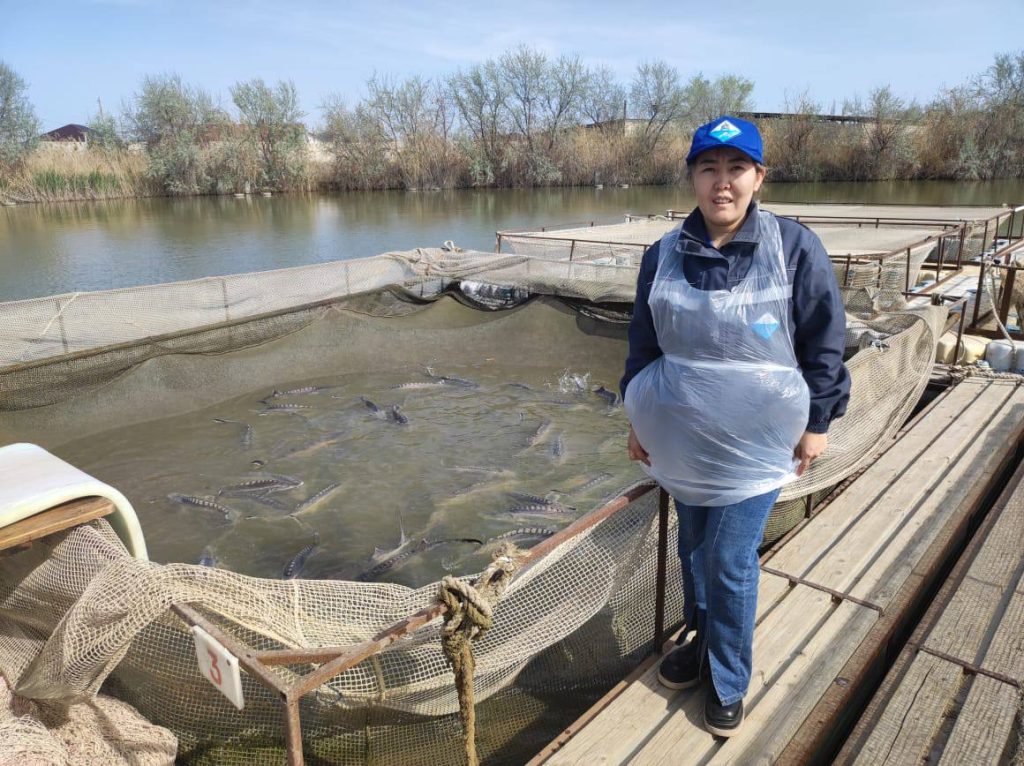

In connection with the wide spread of commercial sturgeon breeding in Kazakhstan over the past 15 years, back in the 2000s, the formation of brood stocks (RMS) of various sturgeon species was initiated in order to provide commercial farms with their own fish stock. The formation of RMS of sturgeons, organized earlier in the conditions of fish farms, was carried out chaotically, since at that time there was a reorganization and transformation of existing farms under the prevailing economic conditions in the Republic of Kazakhstan. Taking into account the inferiority of such RMS of sturgeons, formed in the conditions of commercial sturgeon farms, it was necessary to carry out a genetic analysis and reform the RMS taking into account their genetic, age and sex structures.
The newly created farms were based on the bases of RAS (recirculating water supply installation), the use of which in the econometric conditions of the Republic of Kazakhstan showed their non-viability without a clear structuring of processes and a targeted reduction in the cost of manufactured products. The mass selection method was mainly used, in which the majority of individuals from the same age group were selected annually. This selection method does not take into account either gender or family ties within the formed RMS. In the current situation, in order to assess the quality of the formed RMS, it is necessary to use the most modern methods for monitoring genetic processes occurring in artificially reproducible industrial sturgeon stocks. The genetic monitoring system makes it possible to assess the degree of genetic relationship of individuals involved in obtaining reproductive products for the purpose of artificial reproduction, as well as to identify the offspring obtained from genotyped producers.
With the ban on catching sturgeon species from a natural reservoir, farms involved in the export and import of sturgeon products (caviar, salmon, sturgeon meat, fish stock) must carry out genetic certification and have genetic passports for sturgeon fish to confirm that the fish that is on farm is legal. A genetic passport is drawn up for an individual with an electronic PIT tag and contains individual genetic data used for genetic certification.
Conducting genetic research makes it possible to make optimal pairs of crosses between females and males in order to exclude inbreeding and obtain viable young, to limit the legalization of poaching products.
Considering all of the above, in the course of implementing the project “Formation and effective use of sturgeon brood stocks, taking into account their genetic diversity in the conditions of sturgeon fish farms of the Republic of Kazakhstan”, LLP fulfills the tasks of the project:
Evaluation of the genetic polymorphism of RMS of sturgeon species of fish kept at sturgeon hatcheries in the Atyrau region;
Formation of brood stocks of sturgeon species at fish farms in the Atyrau region, taking into account their genetic diversity.
Work is currently ongoing at the commercial fish farm LLP “Caspian Roayl Fish” and the object of research is the RMS of sterlet, formed under the conditions of RAS. The following types of work are currently being carried out:
biomaterial is collected for genetic analysis; photographic materials for the formation of genetic passports;
collection of primary data on fish-breeding biological and morphometric parameters.
Based on the results of the work, an assessment of the genetic polymorphism and fish-breeding and biological indicators of RMS sterlet contained in Caspian Royal Fish LLP will be carried out.
In the photo, a researcher at the laboratory of aquaculture Maratova G.M.